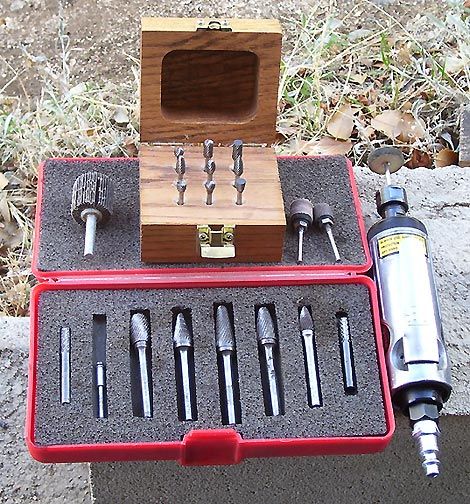Read this very carefuly:
Clean up the sharp edge around the shoprt radious.
It like a cliff and you want it to be rounded. Go ahead and cut in there with a carbide rightto the steel seat. This does not mean flatten this means ROUND.
Clean up around the guides make the trasnition smooth and leave a little ramp around the guide as you enter the bowl. Smooth the sides up from the runner into the bowl.
Removes as little material as possible.
Surface finnish of the port rough, like with some 100 grit sand paper by hand 90 deg to the flow.
DO NOT make the runner any larger unless you have a valve and cam to suport extra flow.
Throw out the black Phenolic spacer and get some 1/2 inch Phenolic and contour this to match the port. Better yet throw out the carb with the Phenolic and get a decent intake, carb and air filter.
Same goes for the exhaust.
Generaly speaking the exhaust valve is a bit large in relationship tot he intake on these engines so not much to be gained from anything you do here. Just smooth out around the guide and fix that short radious.
Make decent header and have it exit the port at the same angle as the runner not the flange.
Look inside the combustion chamber clean up around the valves like this ont he 14cc head.
Look very carefuly at what I did on this head.
clone stuff :: 100_9698.jpg picture by Dougwp - Photobucket
This is very simple and hardly any material was removed at all.
Keep it simple and mild and the head will still work well at low RPM like a stock head and will flow a little better with the heklp of a good carb intake and header at the top of the RPM range.
Get stupid with it and the engine will be a dog at low RPM.

